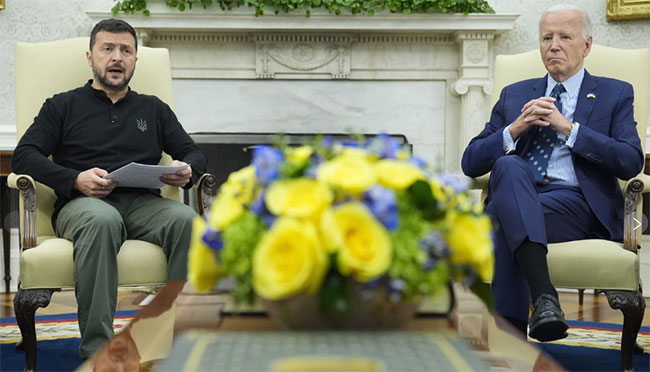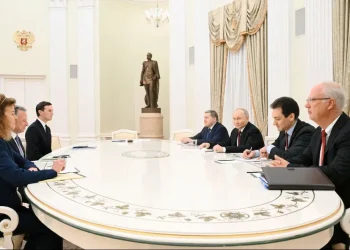Biden Greenlights Ukraine’s Use of Long-Range Missiles for Strikes Inside Russia
MANAUS, Brazil (AP) — President Joe Biden has authorized Ukraine to use U.S.-supplied long-range missiles for deeper strikes inside Russian territory, signaling a significant shift in the scope of U.S. military support for Kyiv. The decision involves the Army Tactical Missile System (ATACMs), known for its extended range and precision capabilities.
This authorization comes amid escalating tensions as Russia bolsters its military efforts by deploying thousands of North Korean troops along Ukraine’s northern border. These forces aim to reclaim territory previously liberated by Ukrainian advances.
The move by the Biden administration reflects a broader effort to equip Ukraine with the tools needed to sustain its counteroffensive against Russia’s invasion. It also represents a critical moment in U.S.-Ukraine relations, particularly as the conflict shows no signs of abating.
Implications of Biden’s Decision
The authorization to use ATACMs enables Ukraine to target strategic Russian positions farther from the frontlines, potentially disrupting supply chains and weakening Russian advances. However, this decision may provoke a strong response from Moscow, given the missiles’ capability to reach deep into Russian territory.
Regional and Political Context
The timing of Biden’s decision is noteworthy. It follows Donald Trump’s recent presidential election victory. Trump has pledged to end the war swiftly but has also introduced uncertainty about the future of U.S. military aid to Ukraine. This raises questions about the long-term continuity of U.S. support for Kyiv.
Simultaneously, Russian President Vladimir Putin’s alliance with North Korea underscores the increasingly global dimensions of the conflict. The deployment of North Korean troops highlights Russia’s reliance on external support, further complicating the war’s dynamics.
This development underscores the evolving nature of the Ukraine-Russia conflict, where new alliances, strategies, and decisions continually reshape the geopolitical landscape.
This article was rewritten by JournosNews.com based on verified reporting from trusted sources. The content has been independently reviewed, fact-checked, and edited for accuracy, neutrality, tone, and global readability in accordance with Google News and AdSense standards.
All opinions, quotes, or statements from contributors, experts, or sourced organizations do not necessarily reflect the views of JournosNews.com. JournosNews.com maintains full editorial independence from any external funders, sponsors, or organizations.
Stay informed with JournosNews.com — your trusted source for verified global reporting and in-depth analysis. Follow us on Google News, BlueSky, and X for real-time updates.














